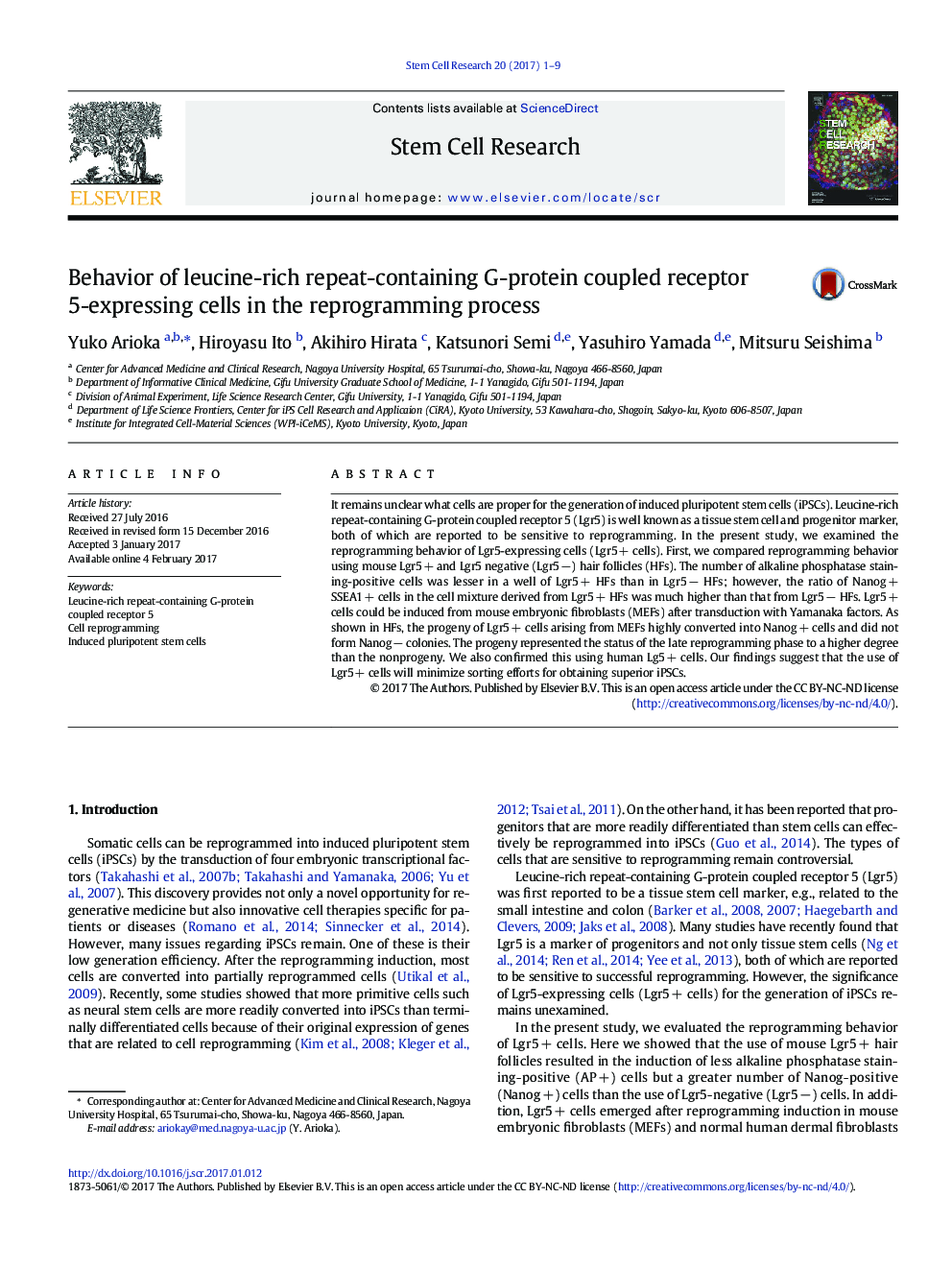| Article ID | Journal | Published Year | Pages | File Type |
|---|---|---|---|---|
| 5522626 | Stem Cell Research | 2017 | 9 Pages |
â¢Lgr5-expressing hair follicles effectively convert into Nanog + cells.â¢Lgr5-expressing cells transiently emerge in the reprogramming process.â¢Early reprogramming process is suppressed in Lgr5-expressing cells.â¢Lgr5-expressing cells are promising materials for the generation of iPSCs.
It remains unclear what cells are proper for the generation of induced pluripotent stem cells (iPSCs). Leucine-rich repeat-containing G-protein coupled receptor 5 (Lgr5) is well known as a tissue stem cell and progenitor marker, both of which are reported to be sensitive to reprogramming. In the present study, we examined the reprogramming behavior of Lgr5-expressing cells (Lgr5 + cells). First, we compared reprogramming behavior using mouse Lgr5 + and Lgr5 negative (Lgr5 â) hair follicles (HFs). The number of alkaline phosphatase staining-positive cells was lesser in a well of Lgr5 + HFs than in Lgr5 â HFs; however, the ratio of Nanog + SSEA1 + cells in the cell mixture derived from Lgr5 + HFs was much higher than that from Lgr5 â HFs. Lgr5 + cells could be induced from mouse embryonic fibroblasts (MEFs) after transduction with Yamanaka factors. As shown in HFs, the progeny of Lgr5 + cells arising from MEFs highly converted into Nanog + cells and did not form Nanog â colonies. The progeny represented the status of the late reprogramming phase to a higher degree than the nonprogeny. We also confirmed this using human Lg5 + cells. Our findings suggest that the use of Lgr5 + cells will minimize sorting efforts for obtaining superior iPSCs.
